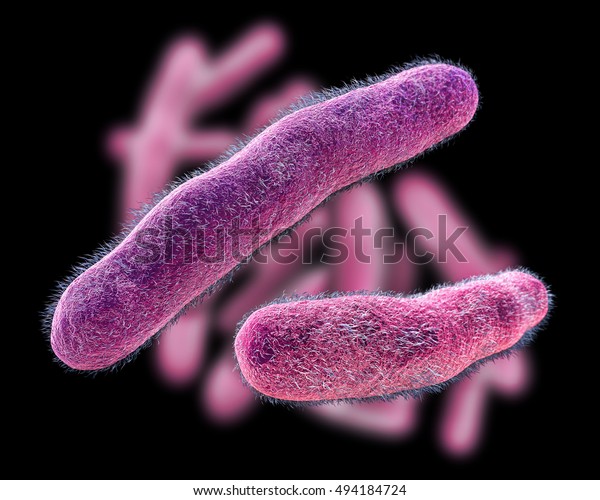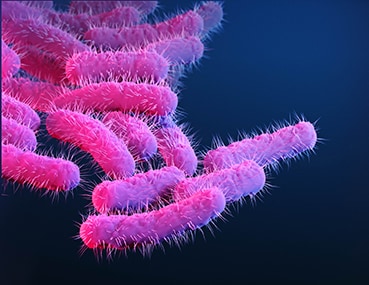Shigella
This is the incubation period. However people with severe illness and those with underlying conditions that weaken the immune system should be.
Symptoms usually last 4.
. In third world countries these infections have been associated with a relatively high mortality rate compared to outbreaks in developed nations particularly among children. Sometimes vomiting and stomach cramps can also occur. Shigella infection is known as shigellosis and is common worldwide.
The diarrhea may be bloody. Infection with Shigella usually results in diarrhoea fever and nausea. Gram-negative facultative anaerobes of the genus Shigella are the principal agents of bacillary dysentery.
Symptoms typically last five to seven days and it may take several months before bowel habits return entirely to. The symptoms begin 1-7 days usually 1-3 days after exposure. Changing the diaper of a sick child or caring for a sick.
Shigella sonnei is the most common species found in the UK. Shigella is a Gram-negative bacterium of the enterobacteriaceae family and the etiological agent of bacillary dysentery or shigellosis. Shigella germs spread easily from one person to another and it only takes a small amount to make someone sick with a disease called shigellosis.
Shigella infection is a disease essentially of children less than 5 years of age. Shigella bacteria cause an infection called shigellosis. Shigella encompasses four subgroups S.
Learn how Shigella germs spread and why some people have a greater chance of getting infected. Its often caused by contaminated food but it can also be passed on sexually. This disease differs from profuse watery diarrhea as is commonly seen in choleraic diarrhea or in enterotoxigenic Escherichia coli diarrhea in that the dysenteric stool is scant and contains blood mucus and inflammatory cells.
Symptoms generally start one to two days after exposure and include diarrhea fever abdominal pain and feeling the need to pass stools even when the bowels are empty. Shigella flexneri and to a lesser extent S. Most people with Shigella infection have diarrhea sometimes bloody fever and stomach cramps.
Shigellosis is an infection of the intestines caused by Shigella bacteria. As mentioned Shigella species can survive in the environment for a given period of time. Only a tiny amount needs to get into your mouth to pass it on - for example from your fingers.
This includes anal sex fisting handling a condom or sex toy used for. Often blood or mucous is found in the faeces. Depending on age and condition of the host less than 200 cells can be enough to cause disease FDA 2012.
Smitteveje Shigella findes kun hos mennesker ikke hos dyr og smitter fra person til person eller via drikke- og badevand samt fødevarer som er blevet forurenet med. Være årsag til udbrud af diarrésygdom i børneinstitutioner. Shigella sonnei findes i Danmark og ses derfor også hos mennesker der ikke har været ude at rejse og kan bla.
Shigella is transmitted when the particles of contaminated faecal matter enters someone elses mouth. It tends to cause a mild illness. In some individuals suffering from shigellosis.
It tends to cause a mild illness. Sonnei are responsible for endemic disease whereas epidemic outbreaks are due to S. Dysenteriae are not indigenous to the.
Most people recover without needing antibiotics. One group of people found to be at risk of shigella are men who have sex with men when contact with the back passage anus is involved. Sex that may involve contact with faeces is a risk.
Shigella dysenteriae group A Shigella. Shigella colonies are slightly pink and translucent with or without rough edges. Some strains of Shigella can be multidrug-resistant and IV antibiotics administered at a hospital may be required.
Shigella usually disappears without the need for antibiotics. Here are four diferent groups of. What causes the foodborne illness shigellosis.
People can become infected through contaminated food or water or through direct contact with even tiny amounts of stool poo from an infected person. Symptoms usually begin 12 days after infection and last 7 days. Signs and symptoms of Shigella infection include diarrhea often bloody fever stomach cramps abdominal pain and feeling as if you need to have a bowel movement even when bowels are empty tenesmus starting a day or two after exposure to the bacteria.
It usually causes diarrhoea. Inoculate suspicious colonies into the following media. Shigella is caused by bacteria found in faeces.
Shigella infection also known as shigellosis or bacillary dysentery is caused by 4 species. Glucose broth TSI agar slant. Shigella infection also called shigellosis is a type of gastroenteritis infection of the gut caused by the Shigella bacteria.
Shigellosis is an infectious disease caused by bacteria of the genus. Symptoms usually include diarrhoea stomach cramps fever and nausea.

Shigella Afbeeldingen Stockfoto S En Vectoren Shutterstock

Shigella Safe Drinking Water Foundation

Complications Of Shigella Infection Shigella Food Poisoning
Salmonella Shigella Agar Media For Salmonella Shigella Anhydrous Nutrient Media For Microbiology Microbiology Life Science Carl Roth France

Shigella Shigellosis Shigella Shigellosis Cdc
Shigella Xdr Situation In Europe Who Statement Outbreak News Today



